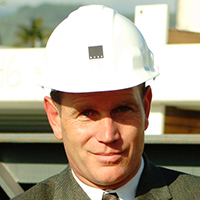Session 6: Affordable High-Rise Workforce Housing: Essential to the Future of Cities

Steven Baldridge
President
Baldridge & Associates Structural Engineering, Inc. (BASE), Honolulu
There are opportunities to address the negative financial and social impacts that global and wealth-driven investment in high-rise development can sometimes have on the local population of cities. Often times when new high-rise developments are announced in cities, focus is on the positive impacts such as job creation, increased local tax revenues and social pride in iconic structures. A potential side effect, however, is increased property values that can actually make housing less affordable for local workers in their hometowns. This situation is often exacerbated by wealthy investors who might purchase units for investment or leisure second home purposes.
Cities have been wrestling with mitigating the sometimes negative impacts of high-rise development in their communities including requirements for developers to build units or set aside funds for local workforce housing. Government regulations or incentives can only go so far to create cost-effective housing for its citizens. Illustrating how one developer focused on the basics of affordable housing through optimization of building layout, repetitiveness in construction, and an efficient structural design to provide cost-effective workforce housing in his community, this can be translated to other cities.
Building development has wide reaching implications on its host cities, not all positive. Community development, design, and construction professionals can work to provide affordable high-rise housing intended to help maintain a sustainable local workforce.
